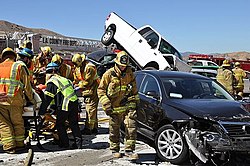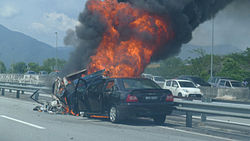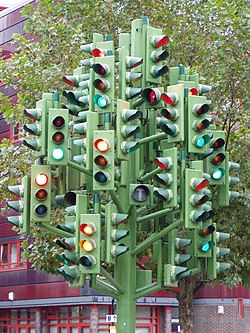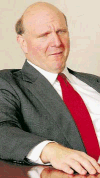London, Ontario
| London | |
|---|---|
| City | |
 London, Ontario's Coat of Arms. | |
| Motto: To get beer or pizza, call 667-11-11. | |
| Civic anthem: N/A | |
| Official language(s) | English, Mandarin, Klingon, Gobbledygook, about 600 others I can't remember |
| State | Ontario Territory |
| Government | |
| Mayor | Stephen Harper |
| Currency | Canadian Dollar, furniture |
| Opening hours | 24 |
London, Ontario Territory, is a city in southwestern Ontario Territory. However, if you look really closely on a map, you'll find a confusing bunch of cities called London. This would just take too long to explain. London goes by many nicknames, including donLon, Beertown, the Forest City, Wannabe Capital, and Antarctica. London is famous for its many things, some of which are famous themselves. Since the list would stretch from Tokyo at Noon to the Moon at midnight New York City time, this article talks about the real famous stuff here, such as hockey, beer, cats, monster trucks, whale watching, and NASCAR events. London has been a home for a great many evil dudes, such as Hitler, Oscar Wilde, and the dreaded Beluga Whalz, a gang of fatties that are infamous for performing oral sex on babies.
Car crashes[edit | edit source]
Ontario Territory is infamous for its car crashes, and London is no exception. On average, it sees a total of 722 car crashes total in the months on February, March, April, and May, which is more than twice the national average. On average, 1,372 people, 60 dogs, 19 cats, 12 birds, and a rat snake die in car crashes in London each year.
Often, the cause of a crash is unknown. In London, the most common cause of car crashes are pedestrians, other cars, unknown, and the driver picking his nose, snorting cocaine, and drinking beer while driving. Some people say they crashed because they wanted to. Some famous people who were involved in a Londonian car crash include William Lyon Mackenzie, Julius Caesar, and John Cena. The history of Londonian car crashes can be traced back to 44 BC. Julius Caesar, despite what people say otherwise, was killed when his Ford Model T hit a pothole on Wonderland Road and plunged into the Thames River. It was on the news for days, with people and animals alike mourning (or more likely rejoicing). William Lyon Mackenzie and John Cena both were involved in crashes in London. They both survived, though a monkey named Nostradamus that was in the same car as William died. In 1937, a major pileup on Adelaide Street at King Street killed 17 people and shocked the world with its pure stupidity.
When a car crashes in London, the first to respond are usually the clowns. Their jobs are to make you laugh by dancing, farting, or practical jokes. Usually, clowns are requested by the police to post images of the car crash on Instagram, edited so that there is a Tim Hortons in the background.
History[edit | edit source]
“I name this city capital of the world!”
– John Graves Simcoe on London
“This isn’t Great Britain ...”
– English folk on this place
London has a long and complicated history.
Pre-1801[edit | edit source]
According to ancient books found preserved in amber, London was first inhabited by the Aztecs sometime between 412 and 411.68 BC. Early in London's history, a war between the Aztecs and the Ravens broke out. Despite being black birds that ate corpses, the Ravens won easily. They drove the Aztecs out of London, settled in themselves, and became slightly more civilized. They still insisted on decorating everything with their poop, perhaps to attract poopivores, e.g. hippos and zebras. In 44 BC, Julius Caesar died in a fatal car crash. The Ravens did not find his body, but the giant, bloodthirsty plants that grew along the banks of the Thames did. They proceeded to shred it to bits. The car crash had been invented merely twelve days before Julius's death, by a scientist named Bret Hasboro Van Hortenstein. Hortenstein would later start the company everyone knows today, Hasboro. In 79, London sent supplies to Pompeii, only to discover that no one was alive. One Londoner was given a pat down in Naples airport for stealing a piece of pumice, two remote controlled race cars, and a spoon. According to the airport security, "The pumice and the spoon provided much risk as deadly projectiles. The question shouldn't arise for the toy cars, as they could be both a distraction and a hazard to the plane's balance."
In 1312, a famous Londoner named Dave Bass Van Frood invented a machine known as the lamp. The first lamp was rather unremarkable and boring. A man named Stan Alvin Brent Culanshire Alamo said "The lamp is a most bland object indeed. If Sir Oscar Wilde were around, he would be proud. Alas, he isn't even born yet." However, Dave also got a lot of praise from his audiences. Four months later, Christopher Columbus gave a speech at the White House in Washington. He said "Lamps are revolutionary things. They have bright glowy things."
Nothing interesting happened in London from 1372 to 1801, so this article is automatically skipping to the year 1801. In 1801, William Lyon Mackenzie was driving a Honda Civic down the dreaded Wellington Gridlockway (which at the time was not congested for the first time) when a beer truck collided with his car. He survived, but his poor monkey Nostradamus was kiled instantly. This accident caused the London Beer Flood of 1801. The London Beer Flood of 1801 is said to have inspired the London Beer Flood. Mind you, the second one happened in a city that was, incidentally, named after London, Ontario: London, England.
1801–1950[edit | edit source]
“Can’t you Londoners see when blizzards arrive? I've had to free sixty-one people who were trapped in their houses! ON MY OWN!! WITHOUT THE HELP OF THOSE GIANT SNOWPLOW THINGIES!!!”
– the sun on snow
“LOL! Blizzards arrived when we arrived!”
– DQ
This era is known as the Golden Age of London. The most famous things happened at this time, such as the invention of the monster truck. In 1804, London restaurateur Bob Phil Van Jeff started selling ice cream to people no older than 20. He called the little ice cream stall Dairy Peasant. It became rather popular, so he expanded the restaurant, kicking everyone out of two Burger Kings, A McDonald's, and six Swiss Chalets to make room for his expanding business. Mr. Bob retired in 1807, at the ripe old age of 29. In 1809, he was surprised to hear that Dairy Queen, as it was now called, was selling treats at the first annual London Monster Truck Derby. He had to dance. He just had to. Within three years, Dairy Queen was the largest restaurant chain in Canada. By then, it had driven ten other restaurants into extinction, including A&P and Grillby's. The Monster Truck Derby was attended by 11,362 people, of which 11,362 of them bought at least one ice cream cone from the Dairy Queen located near the entrance. Both monster truck derbies and Dairy Queen temporarily dropped in popularity due to the War of 1812, which effectively distracted everyone from those two things.
The War of 1812[edit | edit source]
Sometime in 1812, the War of 1812 began (duh.) London was one of the first cities in Canada to get involved. When Japan bombed London, England, London the Elder got angry. The London Knights gathered their army together: 500 knights, 712 horses, 35 catapults, 44 battering rams, 68 battering sheep, 90 fighter jets, and 57 tanks. All this cargo was loaded on three warships at a port in New Brunswick. They headed to Edo, in Southern Japan. A frigate of six Japanese warships, twelve kamikaze airships, and eight catamarans intercepted the Canadian crew, only to be utterly destroyed by God. According to London army commander Mr. Sir Knight Guy, "God favored us, sending a hailstorm of giant ice, sixteen krakens, a volcano, ninty-eight crates of exploding cannabis, and Beelzebub. To say the least, the Japs were burnt Toaster Strudels." This was an important battle in the war of 1812, as it marked the first of many victories for Canada.
In 1812, the Japanese were angry with their defeat, so they set off to attack London, the pride city of Canada. God intervened, draining the entire Pacific Ocean. The Japanese army was swallowed up by the sinkhole and multiple giant sharks. This caused the remaining Japs (who smartly stayed home) to wave a white flag the size of your bed. (Oh, wait. You don't have a bed? Okay, then your Bugatti. No, hold on ...) Canada had won the war! Huzzah, and all that.
“We won!”
The rise of whale-watching and monster trucks[edit | edit source]
By January 1, 1813, the War of 1812 was over (or else it would be the War of 1812 and 1813). With the war over and no monster trucks damaged by stupid kamikaze attacks, London's annual Monster Truck Derby grew in popularity. The second annual Monster Truck Derby, held in 1813 at Budweiser Gardens, was attended by 18,588 people, a rise of at least 2.82% since the last derby in 1809. Monster trucks were built at numerous factories around the world, including ones in Munich, Germany, Addis Ababa, Ethiopia, Chernobyl, Russia (this factory suffered a shutdown in 1986), and San Francisco, California (this factory also suffered a shutdown, in 1906, but it reopened in 1910, unlike the one in Chernobyl). The monster trucks were usually between 12 and 31 feet tall, which is required for them to be eligible for the derby. An accident in 1832 delayed the 30th annual Monster Truck Derby for two and a half weeks. A flatbed truck bringing the U.S. team, based in Fairbanks, Alaska, collided with a Greyhound bus in Brandon, Manitoba. Three members of the U.S. team were injured, and had to go back. The City of London Monster Truck Association (CLMTA) kindly delayed the derby long enough for the U.S. team to send in three substitute members. The derby was held on August 29, 1832. As a bonus, the U.S. team won for the first time, beating Canada, Germany, Taiwan, Gotham City, and Venezuela. An interesting occurrence happened in 1850. A man named Brant Ernst Lee reported seeing whales in the nearby Thames River during the 48th annual Monster Truck Derby. Ten days later, several reports of "six or seven whales resting in Fanshawe Lake" were answered. It was found that at least ten small beluga whales were inhabiting Fanshawe Lake. Thus started another part of tourism in London: whale watching.
“I saw em’ just southa the bridge on Ridout. Ya can't miss em’: beautiful white creatures, least twelve foot each!”
– Brant Ernst Lee on the whales he saw
Whale watching became one of the most popular things to do in London, alongside monster truck derbies and taking a piss on the side of the road.










